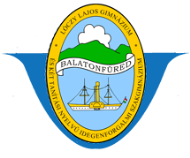George Pólya and the Heuristic Tradition
Hungarian-born mathematician George Pólya (1887-1985) was one of those who channeled the Hungarian and, more broadly speaking, European school tradition into American education in a series of books and articles, starting with his 1945 book How to Solve It. A distinguished mathematician, Pólya drew on several decades of teaching mathematics based on new approaches to problem solving, first as a professor in Zurich, Switzerland, and later in his life at Stanford, California. Pólya’s significance in general methodology seems to have been his proposition to interpret heuristics as problem solving, more specifically, the search for those elements in a given problem that may help us find the right solution. For Pólya, heuristics equaled„Enfindungskunst, a way of inventive or imaginative power, the ability to invent new strategems of learning, and bordered not only on mathematics and philosophy but also psychology and logic. This way a centuries-old European tradition was renewed and transplanted into the United States where Pólya had teremendous influence on subsequent generations of teachers of mathematics well into the 1970s.






